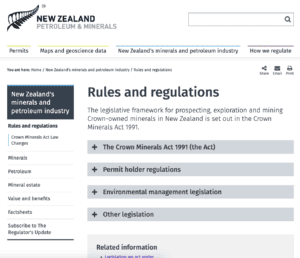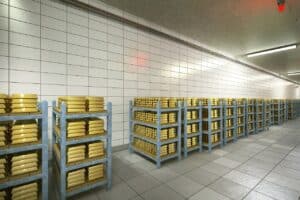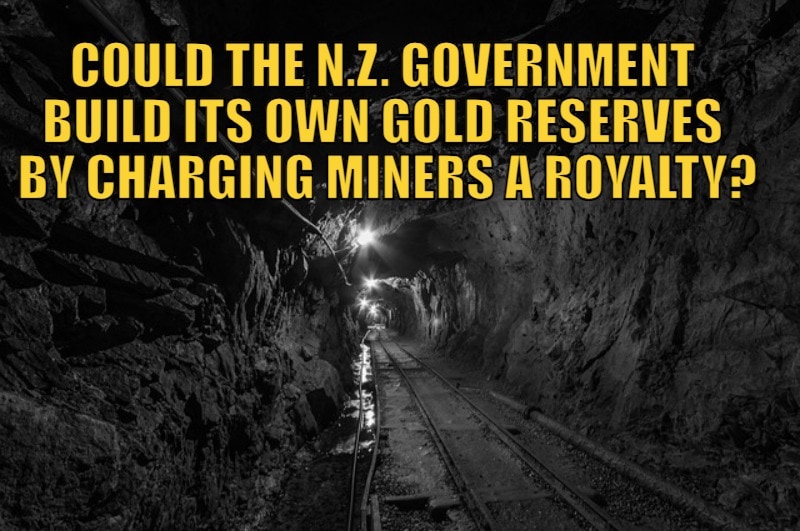New Zealand has a significant presence of minerals such as gold, silver, coal, oil, and gas. With increasing interest in mining, you may be wondering how the government benefits from these valuable resources?
In this article, we’ll take a look at the gold royalties paid to the New Zealand government by gold miners. We’ll shed some light on the contributions to the nation’s economy, but also the potential opportunities to build a gold reserve.
Table of contents
- The Crown Minerals Act 1991
- Types of Gold Royalties
- Royalty Rates and Thresholds
- How Royalties Benefit New Zealand
- What Might the Royalties From the New Snowy River Mine Be?
- The Potential for Gold Royalties to Build a Gold Reserve
- Why We Should Be Embracing Gold (and Maybe Even Gold Mining)
- Conclusion: Start Your Own Gold Reserve
Estimated reading time: 7 minutes
Here’s the reader question that Paul asked as a result of a new gold find in New Zealand:
“Today’s news headline on News Hub “Gold has just been struck at New Zealand’s deepest mine and the operators believe it could be worth $2 billion“. This mine backs on to the nearby Blackwater Mine [that] has also produced gold before. Gold was discovered there in the early 1900s and the mine ran from about 1906 to 1951 and 750 oz was produced. The new mine estimate is “We think we got 700,000 ounces there. Three sevens are 21 – that’s $2.1 billion we got there,” Smith said.
So I wondered who owns the resources and found the following:
“New Zealand’s mineral estate https://www.nzpam.govt.nz/nz-industry/rules-regulations/
Crown-owned minerals are those minerals that are owned by New Zealanders and administered by the Crown, as set out in the Crown Minerals Act 1991.The Crown automatically owns all petroleum, gold, silver, and uranium in New Zealand and has rights to all minerals in the Exclusive Economic Zone (EEZ) – offshore between 12 and 200 nautical miles (nm) – and the Extended Continental Shelf (ECS – when the shelf extends beyond the EEZ out to a maximum of 350 nautical miles).”
So there must be a contract with Snowy River Mine that benefits New Zealand and a great opportunity for New Zealand to hold a gold reserve. If the contract has a 25% return of the $2.1 billion, $525 million should be stored in our Gold Reserve.
So my questions are “1. Does the NZ Govt get a return on mined resources such as Gold, Silver, Coal, Oil, and Gas etc? and 2. What percentage does the Govt take either in actual resource or in dollar equivalent?”
The Crown Minerals Act 1991
As Paul points out, in New Zealand, the ownership and administration of mineral resources are governed by the Crown Minerals Act 1991. According to this act, the Crown automatically owns all petroleum, gold, silver, and uranium in the country, both onshore and offshore within the Exclusive Economic Zone (EEZ) and Extended Continental Shelf (ECS). This means that the government holds the rights to these valuable minerals.
Types of Gold Royalties
In answer to Paul’s questions, yes Gold miners in New Zealand pay two main types of royalties to the government:
- Ad Valorem Royalty (AVR) and
- Accounting Profits Royalty (APR)
The AVR is a value-based royalty, levied on the value of the actual gold sold.
Whereas, the APR assesses accounting profits, using defined accounting conventions related to profits, operating, and capital expenditures. The APR applies to accounting profits exceeding a specified threshold.
Royalty Rates and Thresholds

According to this document the royalty paid by miners of gold and silver was doubled and took effect in April 2013:
Previously it was:
A tiered AVR of 1% or 2%. Where the 2% AVR applied to annual net sales revenue >$1.5m
In 2013 this was changed to a hybrid AVR/APR. So whichever is higher of:
- 2% AVR
- 10% APR – APR applies to greater than $2m accounting profit
See: 13 Royalty payable for Tier 1 permits
So how about in plain english? A gold miner pays whichever is higher of:
- A value based royalty of 2% of the value of the gold they mine.
- Or, an accounting profits royalty of 10% of profits (when the company’s profit is greater than $2 million).
Both of these are paid in New Zealand dollars. So even the Ad Valorem (valued based) royalty is still paid in dollars not in physical gold.
How Royalties Benefit New Zealand
The revenue generated from gold mining and gold royalties provides income to the government and support to the nation’s economy. But these funds just go into the general government coffers and could be allocated to any projects and initiatives. Hopefully that enhances the overall well-being of New Zealand.
What Might the Royalties From the New Snowy River Mine Be?
Using the above Royalty rates for gold for the Snowy River mine, however we could not locate any specific details of this. But it would seem that the above royalty rates for gold would apply.
Therefore if the Snowy River general manager is correct and they have $2.1 billion in reserves, that could amount to something in the vicinity of $42 million in royalties (2% AVR). This could be higher because we don’t know what the profit of the company will be in the long run. But $42 million would be the minimum.
So it’s not quite the $525 million gold reserve that Paul hoped for!
With a forecast of 70,000 ounces prediction per year, this would amount to $210 million in gold mined per year at current prices. Therefore a minimum of $4.2 million per year in royalties (2% AVR) from the Snowy River mine.
The Potential for Gold Royalties to Build a Gold Reserve

Currently all royalties are paid to the NZ government in dollars.
However as Paul alludes to, there is the potential for the government to use these royalties to establish and build a gold reserve. We say “establish”, because as we’ve discussed previously New Zealand currently has no gold reserves.
Therefore, by setting aside even just a portion of royalty revenues, the government can create and grow a gold reserve. Thereby providing financial stability and security during uncertain economic times. A gold reserve serves as a valuable safety net, safeguarding the country’s wealth and bolstering its financial resilience.
The calculations above are for just one gold mine. So if the government instead put all gold royalties they receive into physical gold this could add up significantly over time. It would certainly be more than the current reserves of zero!
According to the government revenue report, the New Zealand government received $13.6 million NZD in royalties from gold mining in 2021. This was a slight increase from the previous year, when the royalties were $12.9 million NZD. The gold production volume in New Zealand was approximately 5.9 thousand kilograms in 2020, and 6 thousand kilograms in 2021 (around $6 billion in gold). Most of this gold was mined at the Macraes mine in the South Island, which is the largest gold mine in New Zealand.
The other benefit would be this reserve would likely continue to grow in value. Compared to the loss of value through inflation when royalties are merely paid and held as dollars.
Why We Should Be Embracing Gold (and Maybe Even Gold Mining)
The Green Party currently wishes to stop any new mines on conservation land. They would likely be happy to stop all new mines in New Zealand. However as we wrote previously we think the Greens and New Zealand as a whole should be embracing gold.
See: Oceania Gold Mine Expansion | Why the Greens Should be Embracing Gold
Conclusion: Start Your Own Gold Reserve
Gold miners in New Zealand do currently contribute to the nation through royalties paid to the government. The Crown Minerals Act 1991 governs the ownership and administration of mineral resources, granting the government rights to valuable minerals, including gold.
The different types of royalties, royalty rates, and thresholds help fund critical sectors and projects that benefit New Zealand and its citizens.
However, more importantly we would say, these royalties have the potential to support the establishment of a gold reserve, adding an extra layer of financial security for the country.
The Reserve Bank has previously said they didn’t think gold was “liquid” enough! So it’s unlikely they will be buying any. But maybe a future government could choose to start a gold reserve or direct the RBNZ to do so? However, we won’t be holding our breath.
So in the meantime maybe start your own gold reserves to ensure you and your family are protected at the very least.


Pingback: How Much Gold Has China Got? - Gold Survival Guide